Arthritis is a joint disorder featuring inflammation. A joint is an area of the body where two different bones meet. A joint functions to move the body parts connected by its bones. Arthritis literally means inflammation of one or more joints.
Arthritis is frequently accompanied by joint pain. Joint pain is referred to as arthralgia.
There are many types of arthritis (over 100 identified, and the number is growing). The types range from those related to wear and tear of cartilage (such asosteoarthritis) to those associated with inflammation resulting from an overactive immune system (such asrheumatoid arthritis). Together, the many types of arthritis make up the most common chronic illness in the United States.
The causes of arthritis depend on the form of arthritis. Causes include injury (leading to osteoarthritis), metabolic abnormalities (such as gout andpseudogout), hereditary factors, the direct and indirect effect of infections (bacterial and viral), and a misdirected immune system with autoimmunity (such as in rheumatoid arthritis andsystemic lupus erythematosus).
Arthritis is classified as one of the rheumatic diseases. These are conditions that are different individual illnesses, with differing features, treatments, complications, and prognoses. They are similar in that they have a tendency to affect the joints, muscles, ligaments, cartilage, and tendons, and many have the potential to affect other internal body areas.
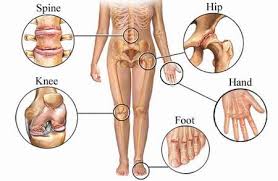

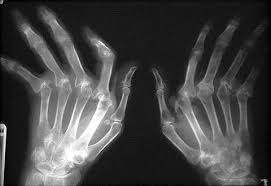
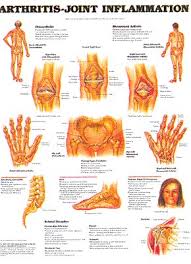
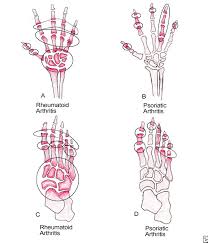
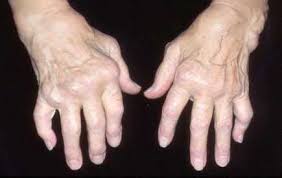
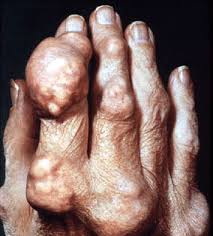
Symptoms of arthritis:
Symptoms of arthritis include pain and limited function of joints. Inflammation of the joints from arthritis is characterized by joint stiffness, swelling, redness, and warmth. Tenderness of the inflamed joint can be present.
Many of the forms of arthritis, because they are rheumatic diseases, can cause symptoms affecting various organs of the body that do not directly involve the joints. Therefore, symptoms in some patients with certain forms of arthritis can also include fever, gland swelling (swollen lymph nodes),weight loss, fatigue, feeling unwell, and even symptoms from abnormalities of organs such as the lungs, heart, or kidneys.
The first step in the diagnosis of arthritis is a meeting between the doctor and the patient. The doctor will review the history of symptoms, examine the joints for inflammation and deformity, as well as ask questions about or examine other parts of the body for inflammation or signs of diseases that can affect other body areas. Furthermore, certain blood, urine, joint fluid, and/or X-ray tests might be ordered. The diagnosis will be based on the pattern of symptoms, the distribution of the inflamed joints, and any blood and X-ray findings. Several visits may be necessary before the doctor can be certain of the diagnosis. A doctor with special training in arthritis and related diseases is called a rheumatologist (see below).
Many forms of arthritis are more of an annoyance than serious. However, millions of people suffer daily with pain and disability from arthritis or its complications.
Earlier and accurate diagnosis can help to prevent irreversible damage and disability. Properly guided programs of exercise and rest, medications, physical therapy, and surgery options can idealize long-term outcomes for those with arthritis.
It should be noted that both before and especially after the diagnosis of arthritis, communication with the treating doctor is essential for optimal health. This is important from the standpoint of the doctor, so that he/she can be aware of the vagaries of the patient's symptoms as well as their tolerance of and acceptance of treatments. It is important from the standpoint of patients, so that they can be assured that they have an understanding of the diagnosis and how the condition does and might affect them. It is also crucial for the safe use of medications.
There are several homeopathic remedies that can treat arthritis effectively, and some of these are listed below. Self-treatment is possible, and there are some ‘broad formula’ products for arthritis (available at stores like Boots and Holland and Barratts). But these are generally effective only for treating acute bouts of pain rather than the underlying cause of the disease.
But with such a difficult disease, professional homeopathic treatment is required if you are looking for deeper, longer-lasting relief from the pain.
Arnica: Chronic arthritis with a feeling of bruising and soreness. The painful parts feel worse from being moved or touched. (Herbal Arnica gels and ointments may also help to soothe arthritic pain when applied externally to areas of inflammation and soreness)
Aurum met: Wandering pains in the muscles and joints that are better from motion and warmth, and worse at night. Deep pain may be felt in the limbs when the person tries to sleep, or discomfort may wake the person up. People who need this remedy are often serious and focused on work or career, with a tendency to feel depressed.
Bryonia: This remedy can be helpful for stiffness and inflammation with tearing or throbbing pain, made worse by even the smallest motion. The condition may have developed gradually, and is worse in cold dry weather. Discomfort is aggravated by being touched or bumped, or from any movement. Pressure brings relief (if it stabilises the area) and improvement also comes from rest. The person may want to move, but has to stay completely still and not be interfered with.
Calcarea carbonica: This remedy may be useful for deeply aching arthritis involving node formation around the joints. Inflammation and soreness are worse from cold and dampness, and problems may be focused on the knees and hands. Weakness in the muscles, easy fatigue from exertion, and a feeling of chilliness or sluggishness are common. A person who needs Calcarea is often solid and responsible, but tends to become extremely anxious and overwhelmed when ill or overworked.
Causticum: This remedy may be indicated when deformities develop in the joints, in a person with a tendency toward tendon problems, muscle weakness, and contractures. The hands and fingers may be most affected, although other joints can also be involved. Stiffness and pain are worse from being cold, and relief may come with warmth. A person who needs this remedy often feels best in rainy weather and worse when the days are clear and dry.
Calcarea fluorica: This remedy is often indicated when arthritic pains improve with heat and motion. Joints become enlarged and hard, and nodes or deformities develop. Arthritis after chronic injury to joints also responds to Calcarea fluorica.
Dulcamara: If arthritis flares up during cold damp weather, or after the person gets chilled and wet, this remedy may be indicated. People needing Dulcamara are often stout, with a tendency toward back pain, chronic stiffness in the muscles, and allergies.
Kali bich: When this remedy is indicated, arthritic pains may alternate with asthma or stomach symptoms. Pains may suddenly come and go, or shift around. Discomfort and inflammation are aggravated by heat, and worse when the weather is warm.
Kali carb: Arthritis with great stiffness and stitching pains, worse in the early morning hours and worse from cold and dampness, may respond to this remedy—especially if joints are becoming thickened or deformed. People who need this remedy often have a rigid moral code, and tend to feel anxiety in the stomach.
Kalmia: Intense arthritic pain that flares up suddenly may responds to this remedy—especially when problems start in higher joints and extend to lower ones. Pain and inflammation may begin in the elbows, spreading downward to the wrists and hands. Discomfort is worse from motion and often worse at night.
Ledum: Arthritis that starts in lower joints and extends to higher ones may respond to this remedy. Pain and inflammation often begin in the toes and spread upward to the ankles and knees. The joints may also make cracking sounds. Ledum is strongly indicated when swelling is significant and relieved by cold applications.
Pulsatilla: If the arthritis pain is changeable in quality, or flare-ups move from place to place, and gentle motions relieves the pain, this remedy may be useful. The symptoms (and the person) feel worse from warmth, and better from fresh air and cold applications. People who need this remedy usually are emotional and affectionate, sometimes having tearful moods.
Rhododendron: This remedy is strongly indicated if swelling and soreness flare up before a storm, and continues until the weather clears. Cold and dampness aggravate the symptoms. Discomfort is often worse toward early morning, or after staying still too long. The person feels better from warmth and gentle motion, and also after eating.
Rhus tox: arthritis, with pain and stiffness that is worse in the morning and worse on first motion, but better from continued movement, may be helped with this remedy. Hot baths or showers, and warm applications improve the stiffness and relieve the pain. The condition is worse in cold, wet weather. The person may feel extremely restless, unable to find a comfortable position, and need to keep moving constantly. Continued motion also helps to relieve anxiety.
Ruta grav: arthritis with a feeling of great stiffness and lameness, worse from cold and damp and worse from exertion, may be helped with this remedy. Tendons and capsules of the joints can be deeply affected or damaged. The arthritis may have developed after overuse, or from repeated wear and tear.

 12:02
12:02
 Dr. Ajay Srivastava
Dr. Ajay Srivastava
 Posted in
Posted in 
No Response to "What are arthritis symptoms and signs?homeopathic treatment"
Post a Comment